You’ve likely heard of the game The Red Cathedral, designed by Sheila Santos and Israel Cendrero and published by Devir Games; I saw a listing on Gamenerdz and then began reading and watching other reviews about the game.
A few minutes into reading the game’s instructions, I knew I had to own The Red Cathedral. The dice movement mechanic was enough to hook me in, and I’m happy to say that this is a purchase which will stay in my collection permanently.
What makes The Red Cathedral such a winner? Almost everything.
He’s Terrible, but Ivan Needs Your Help!
In The Red Cathedral, players are competing teams of architects racing to build pieces of Ivan the Terrible’s cathedral in the 15th century. This cathedral, which in real life would become St. Basil’s Cathedral, forms one half of the play area in the game. The other half of the play area is the Market board, where you will perform the majority of your actions.
Players will earn Prestige Points during play, marked by a big iron eagle along various points on the scoring track. There is also a Recognition Points track in parallel with the track for Prestige Points, which tracks smaller scoring gains. The track runs around the board with 40 Prestige Points and 80 Recognition Points in total; although this sounds confusing, the board makes easy sense of it thanks to the visuals around the outer edge of the board.
The cathedral cards used in each game are two-sided; the design of any single game’s cathedral is determined randomly with setup cards scaled based on the number of players. The cathedral will have a certain number of towers, which becomes important as players try to claim the area majority in a tower by building out sections, which provides the majority of end-game scoring.
When play begins, each cathedral card has a list of 3-4 materials—a random mix of brick, lumber, gold, stone, green gems, and purple gems—that must be placed to fulfill that cathedral section. This will score players Recognition Points and possibly award rubles (coins) when the card is flipped over, revealing a door, archway or dome which can later be adorned with Ornamentations by any player.
Before we cover the main actions, let’s talk briefly about your player board.

You’ll see that on the left and right sides, there are spaces to place tiles for a certain cost, anywhere from 2-4 rubles (coins). The tiles that can be placed here are called Workshop tiles, and they allow for players to gain bonuses for using one of the specific dice when taking the Market action.
Along the bottom third of the player board—known as the “Personal Workshop Board”, which we simply refer to as “player board” in this review—is an Inventory Zone. At the start of The Red Cathedral, this area holds up to six materials (lumber, brick, stone, gold, gems), but will expand as players move banners from the player board to claimed sections of the cathedral.
One other line to highlight on the player board: the bonus actions any player can take on their turn. Once per turn, you can spend one Prestige Point to reroll all of the dice in one space on the Market board. Any number of times per time, you can drop your scoring marker the next lowest Prestige Point space to gain 2 rubles. Finally, you can spend one ruble per space to move the white die or the die of your player color forward on the Market board.
Main Actions
Players can choose one of the following three main actions on their turn:
- Claim a cathedral section
- Build a cathedral section
- Acquire materials from the Market
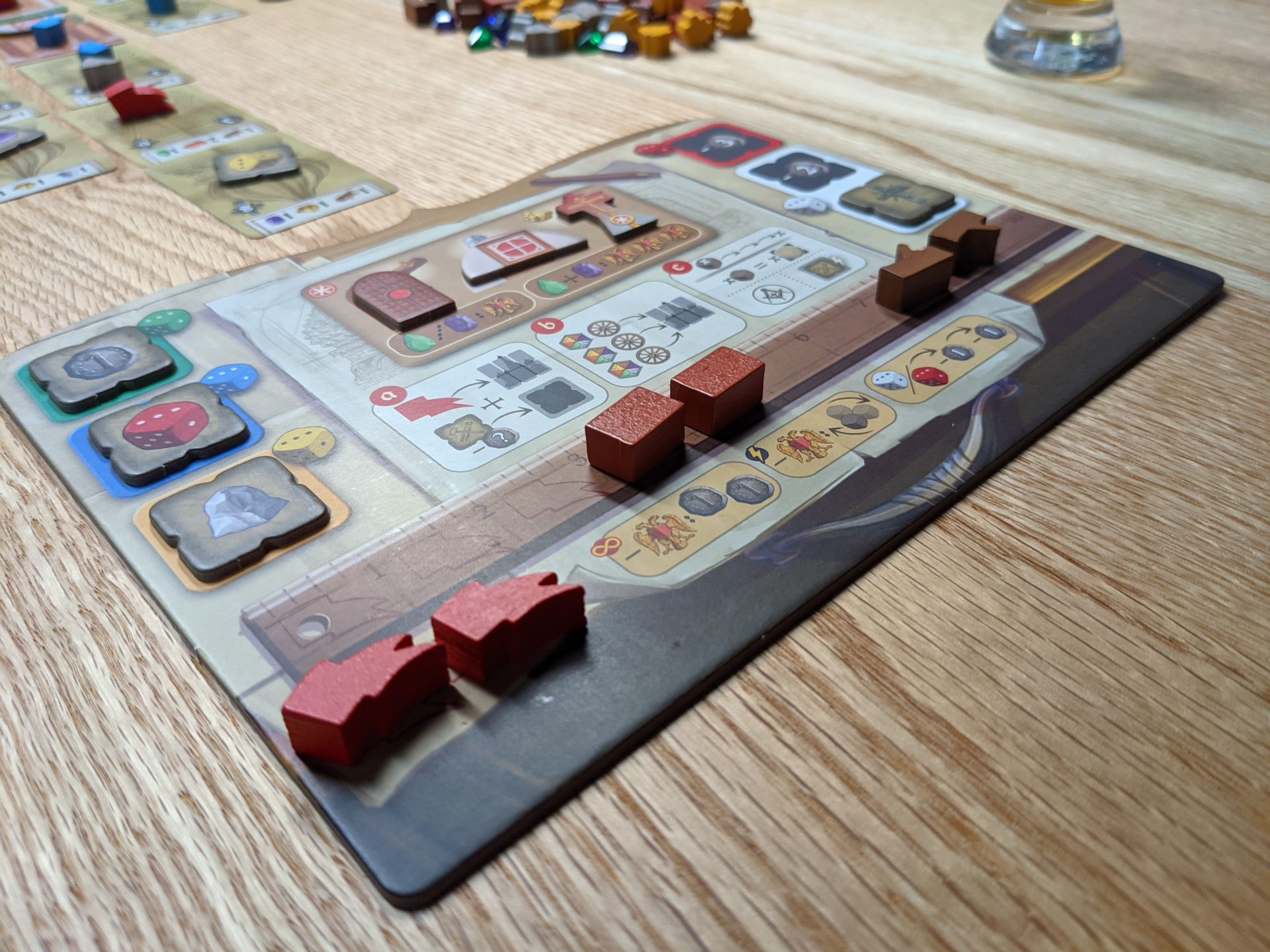
Each player has six banners which will be used during gameplay to claim any one section of the cathedral: a single cathedral card, which can be claimed starting from the bottom of a single tower. Future sections which are claimed have to be either the base of a new tower, or one section (card) above where any other player has already claimed.
In addition, there is a single Workshop tile on each cathedral card, placed during setup. When a player claims a cathedral section, they place one of their banners on the card, then must choose to either pay a certain number of rubles to add this Workshop tile to one of the six dice spots on their player board, or discard it by flipping it over and covering one of the dice spots.
This is where things in The Red Cathedral get interesting. If a player adds this Workshop tile to their board, they first get the bonus listed on the tile, but then get to choose which dice slot to place that tile into. The tiles range from rubles to Recognition Points to bonuses tied specifically to where dice are currently sitting on the Market board.
This also means that when a player uses the die next to an active Workshop tile, they will earn an additional bonus; this is critical to efficiency in The Red Cathedral. Picking the right die in the Market action that can give you both materials and bonus materials before taking a build action might just help you win the race to build that sixth section of the cathedral before another player!
The second action is building sections of the cathedral. This is simply moving materials from your Inventory Zone onto claimed and/or completed cathedral sections, up to 3 at a time. Players can build Ornamentations onto ANY completed section in the cathedral, not just ones with their banner; this offers a chance at additional in-game Prestige Points scoring plus increased chances to gain an edge during final scoring of each tower.
The final action is the heart of The Red Cathedral: acquiring materials from the Market. It’s the best part of the game and why I am already excited to play another round of the game!
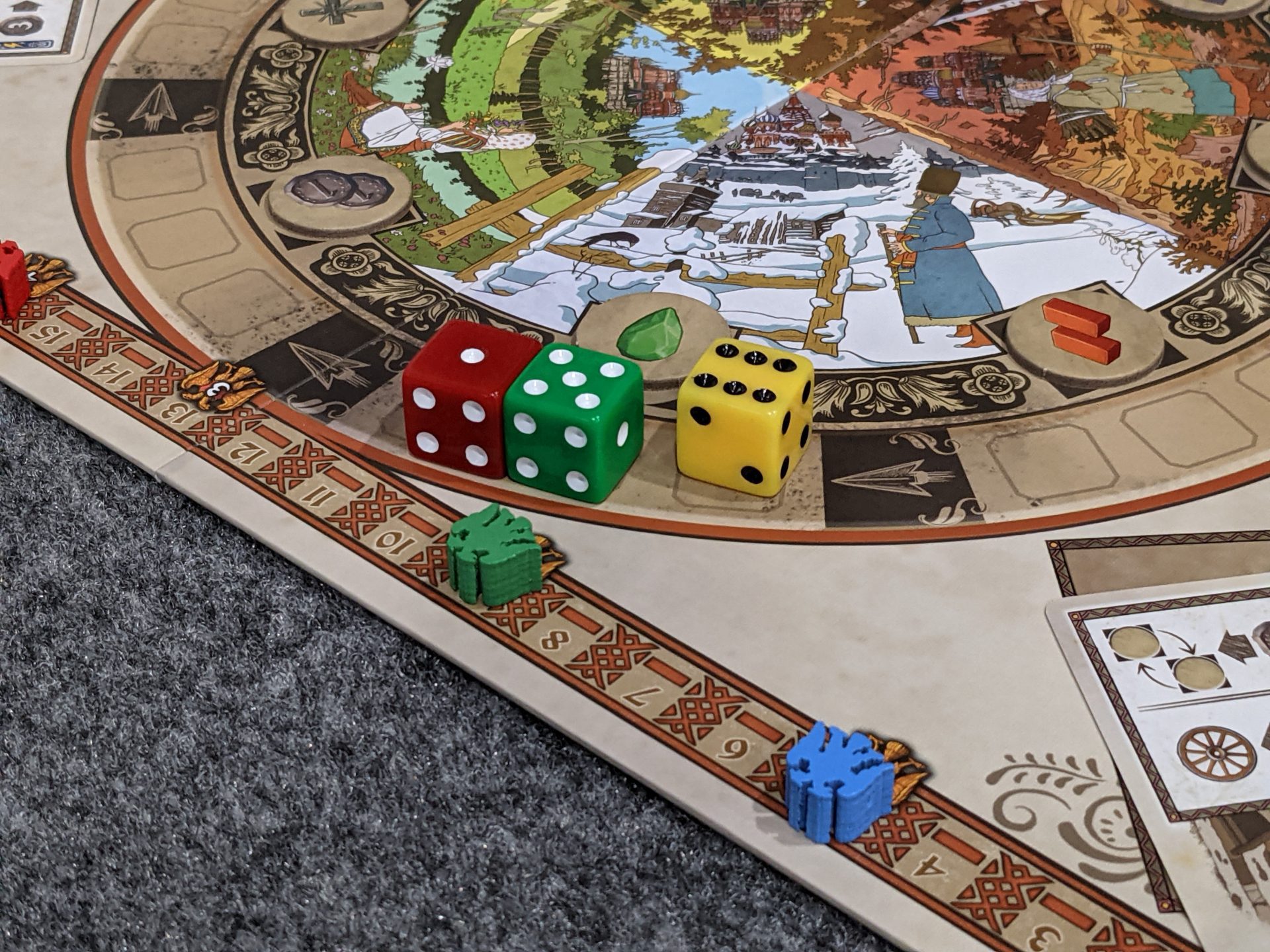
The Market is the Magic
During the Market action in The Red Cathedral, players will choose one of the five dice (red, blue, yellow, green, white) on the board to move. Moving a die means selecting a die and moving it forward in a clockwise direction the number of spaces aligned with the number of pips showing on that die. So, if I want to move the blue die and it’s showing four pips, I will move that die four spaces forward and gain the materials, rubles or Recognition Points listed on the Resource tile in that space.
In addition, players receive resources (materials, rubles or Recognition Points) equal to the number of dice in that space. Each space in The Red Cathedral holds up to three dice; that could mean that if I move a die into the space that has the 2 stones Resource tile, and that space already has two other dice, I’ll get 6 stones (2 stones times 3 dice). After players move one die to a new space, all of the dice in a space are re-rolled, offering new opportunities to the next player.
Once dice are re-rolled, players can do the following 3 things in any order:
- Collect resources to store on their player board
- Optionally, players can utilize one of the two options on each Influence card aligned with the quadrant where the selected die was placed. This ranges from gaining additional resources to market trades (2-for-1 deals, sellings materials for rubles, etc.) to even building parts of the cathedral, outside of the normal build action.
- Based on any Workshop tiles previously placed on a player board, players can gain the bonus of the die moved on that turn to get even more stuff!
Let’s say you moved the blue die; let’s also say you have a Workshop tile which lists 2 rubles as the bonus when you use the blue die. Get paid!
Or, let’s say you had the yellow die icon on the Workshop tile for your blue die movement. And let’s say that yellow die is currently sitting next to the purple gem Resource tile. That means you get whatever resources were listed at the space where your blue die landed…and one purple gem!
Planning turns is a BLAST in The Red Cathedral, my friends. A blast!
“How do I get four lumber, a gold and maybe the chance to build one piece of the cathedral on the same turn?”, you ask yourself. Then you map it out, looking at all five of the dice on the board, the Influence cards, your Workshop tiles, and the amount of money you have. And you see an opening…to do it all at once!!
The Market action in The Red Cathedral is becoming one of my favorite moments in gaming; I really wish I could have seen the faces of the execs at Devir when they played The Red Cathedral and saw this action in motion. I’m confident it was one of the great “mic drops” in recent gaming history. I say often that in a world where 3,000+ games come to market each year, your game has to have a truly magical moment; the Market action in The Red Cathedral is that moment.
Play proceeds until one player completes their sixth and final section of the cathedral, earning a 3 Prestige Point bonus for ending the game. Each remaining player gets one more turn, then scores are added up.
While players will score one Prestige Point for every 5 materials and rubles left over, the big scoring chunk in The Red Cathedral comes down to winning area majorities in each tower. The majority owner of banners and ornamentations in a tower gains the entire Prestige Point score for a tower, with other players in a 3- or 4-player game gaining half of that score rounded down if they have the second-place presence in a tower. Third place earns half of that half, rounded down again.
In a 2-player game, whoever has the majority is the only person to score that tower.
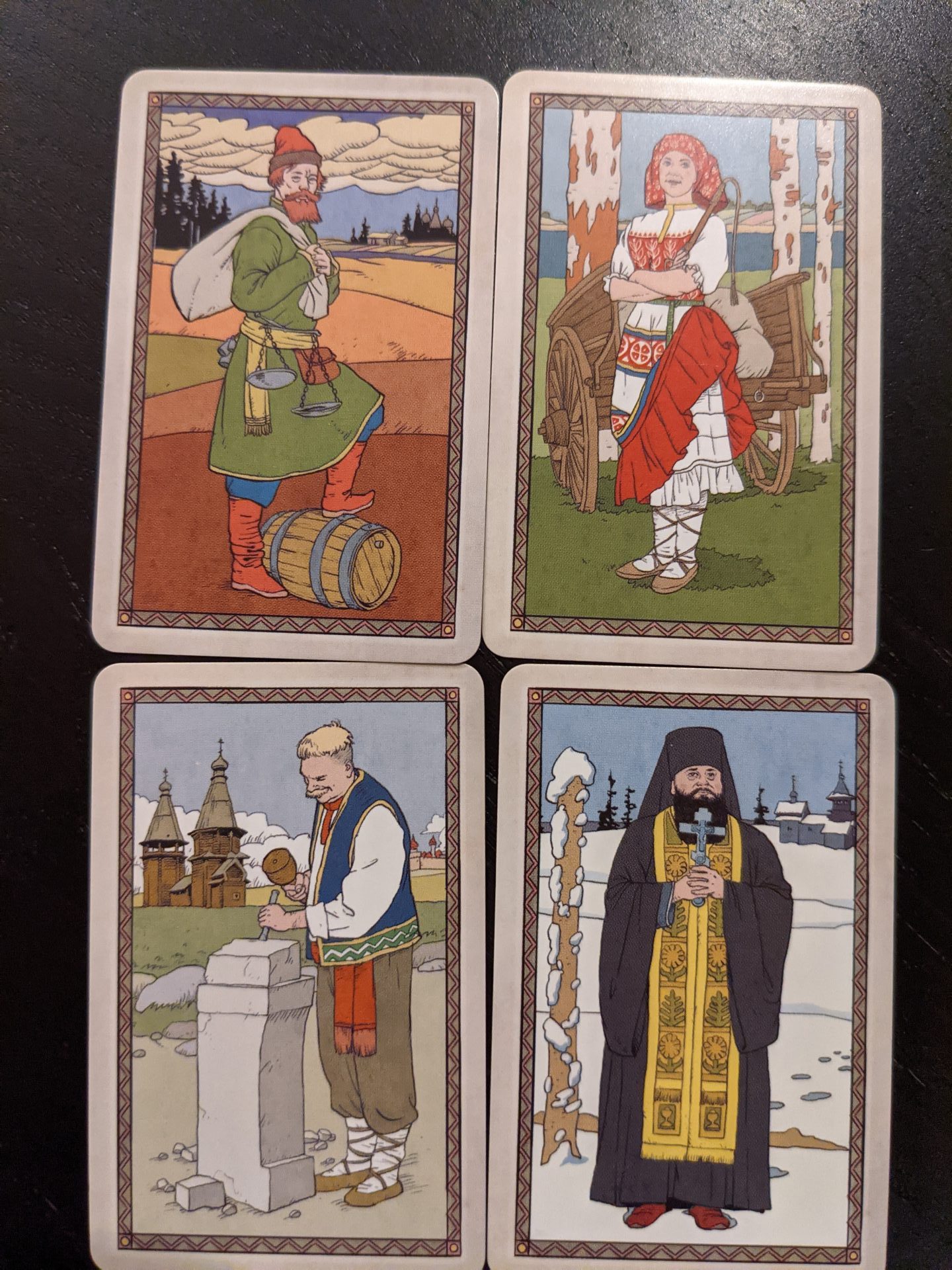
It Can’t ALL Be Love, Naturally
The Red Cathedral is not perfect. The rulebook is fairly dense for a game that I can usually teach to experienced gamers in about 10 minutes. (It’s 19 pages long. Why??) There are plenty of great examples and sometimes, very large pictures; however, I think a quick-start guide would be an easier way to explain the game.
The Red Cathedral is also surprisingly slow to set up. It’s not hard or cumbersome, but it takes about 15 minutes to get a solo game ready for play. Between shuffling three different decks to put into a specific cathedral design for your game, randomly drawing tokens to place on those cathedral cards, randomizing the Resource tokens for the Market board, dropping dice, and sorting the materials, you can’t really whip out the setup.
The Red Cathedral’s biggest issue for me is the iconography, particularly on the player board. All three things you can do on a turn are front and center on the player board, but the icons are such a fail that players can’t refer back to that during a game, meaning this ends up being a waste of the space.
The iconography is also just tricky enough to require keeping the back-cover cheat sheet on the back of the manual out on your table, to remind players of what each Influence card does.
Do you remember the old Trivial Pursuit games, where you had the player pieces with six empty slots for pieces of a pie that could be filled with triangular plastic pieces to show other players you had answered questions correctly on the scoring spaces for each of the six topics?
That icon is used to represent materials, such as brick and lumber. Then, a wagon wheel is used to represent construction. In this way, action B—build cathedral sections—is represented on the player board as a set of three of those Trivial Pursuit wheels, and three of the wagon wheels, with a line pointing towards a cathedral.
Right???
I will never understand why designers can’t just use words to summarize actions, although I’m sensitive to the fact that from a production perspective, it’s a huge savings to print those boards with no languages at all. The best part of this small box production of The Red Cathedral is that all of the components and its four instruction manuals (!!) fit into a 8”x8”x2” box. It’s heavy for the size of the box, but slips nicely in-between other games on my shelf and travels very well, even fitting into a small purse if that’s how you travel to game night.
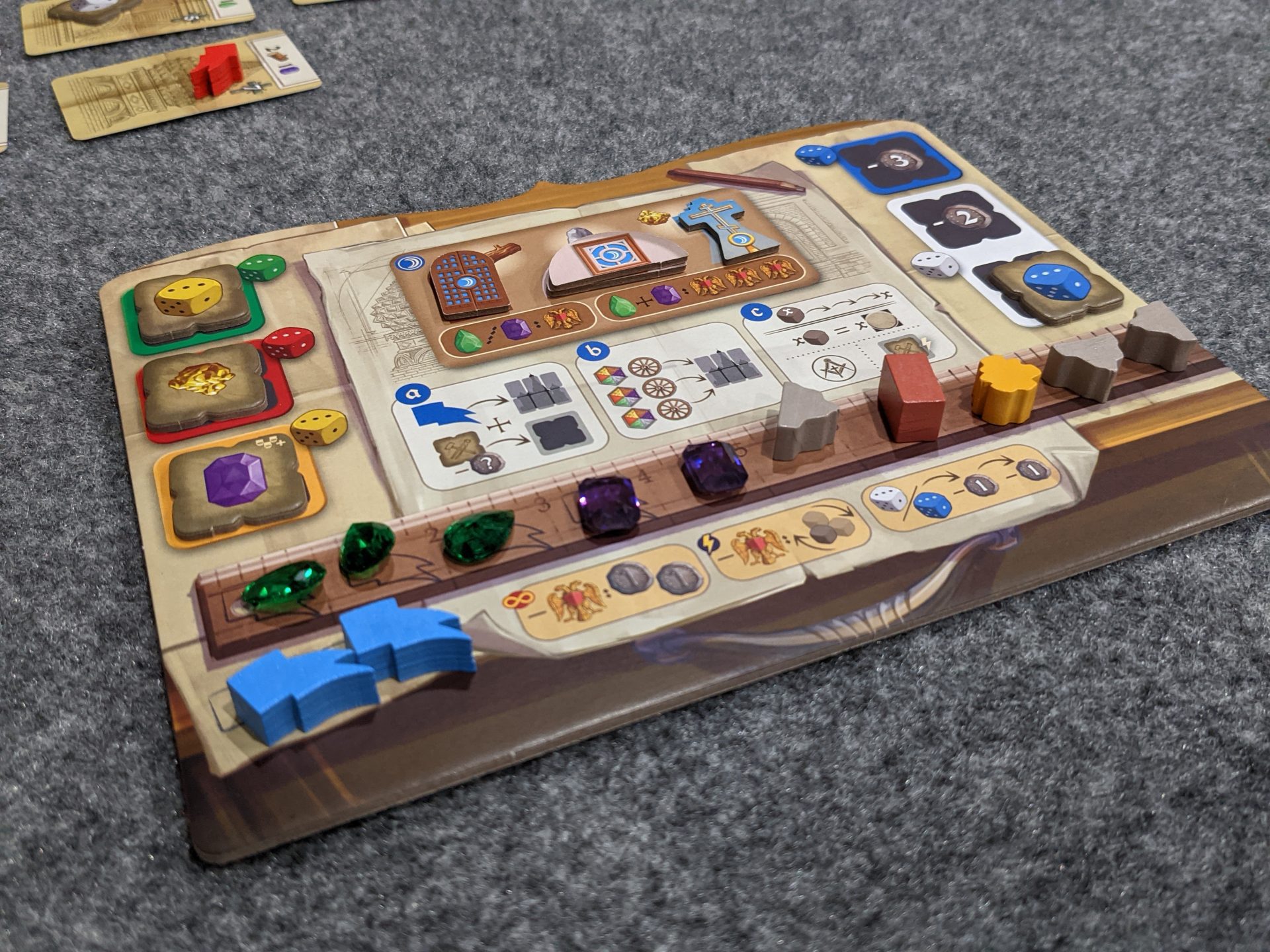
Quick, Snappy, Dice, Happiness
I’ve played The Red Cathedral now a half-dozen times: once at 2 players, twice at 3 players, and 3 times solo.
Every time I play, I love watching players begin to see the magic of the combos that come with the Market actions. There’s always a dance when claiming parts of the cathedral, but in medium-weight Euro fashion, it’s not really a fight, just a race, so The Red Cathedral is always an agreeable time as players race to gather resources in the most efficient way.
And even after my sixth play, I am seeing lots of possibilities with the randomly-selected Influence cards and how those affect choices players make to move dice to certain sections of the board.
I have still not played the game with the “advanced” side of the player boards. The only differences: all of the Workshop tile spaces cost exactly 3 rubles, and the spaces are initially covered by Ornamentations and 2 of the 6 banners. Money is not tight in The Red Cathedral, so I’m not sure if that will really swing my impressions of the game; all this really means is that Ornamentations likely appear later during plays of the advanced game.
Meeple Mountain has really enjoyed other Devir products such as Paris: La Cité de la Lumière, the Mazescape solo games, and Holmes, Sherlock & Mycroft. The Red Cathedral continues that tradition; it is just plain fun. The accessibility is off the charts and each turn’s decision space, particularly with dice selection during the Market action, makes you think without burning your brain. Plus, at $28 on some online retailers, this is an incredible value!


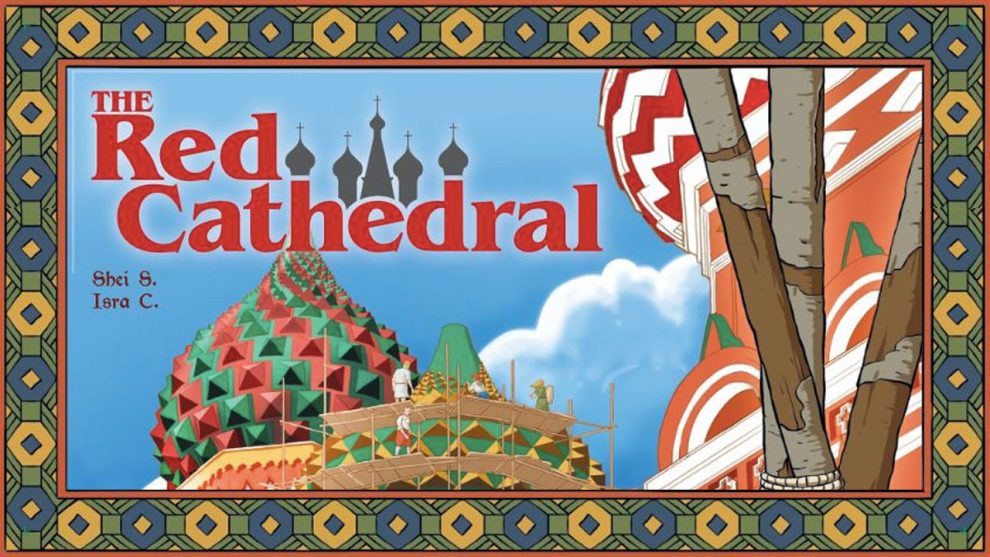









Based on this review and the MM review of The White Castle, I have picked both of these games up. Looking forward to diving into them!
Thanks as always!